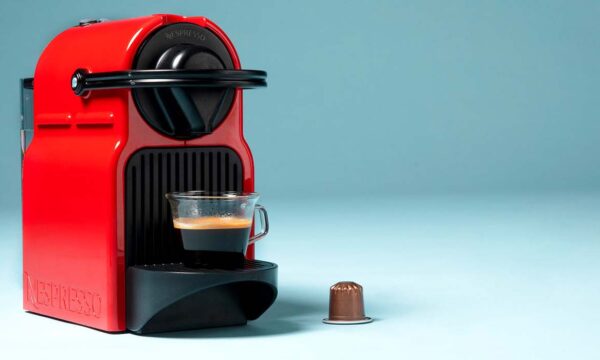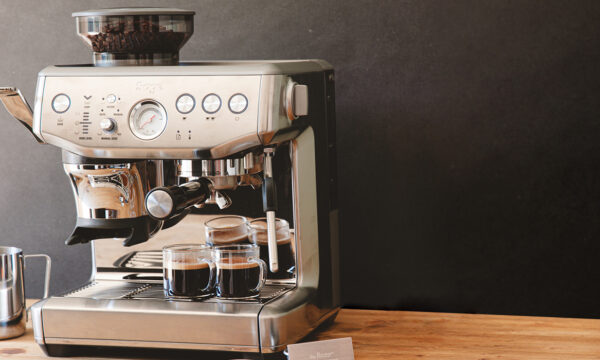
- Home
- Sage Coffee Machine Cleaning: Descaling & Maintenance Tips for Top-Tier Performance
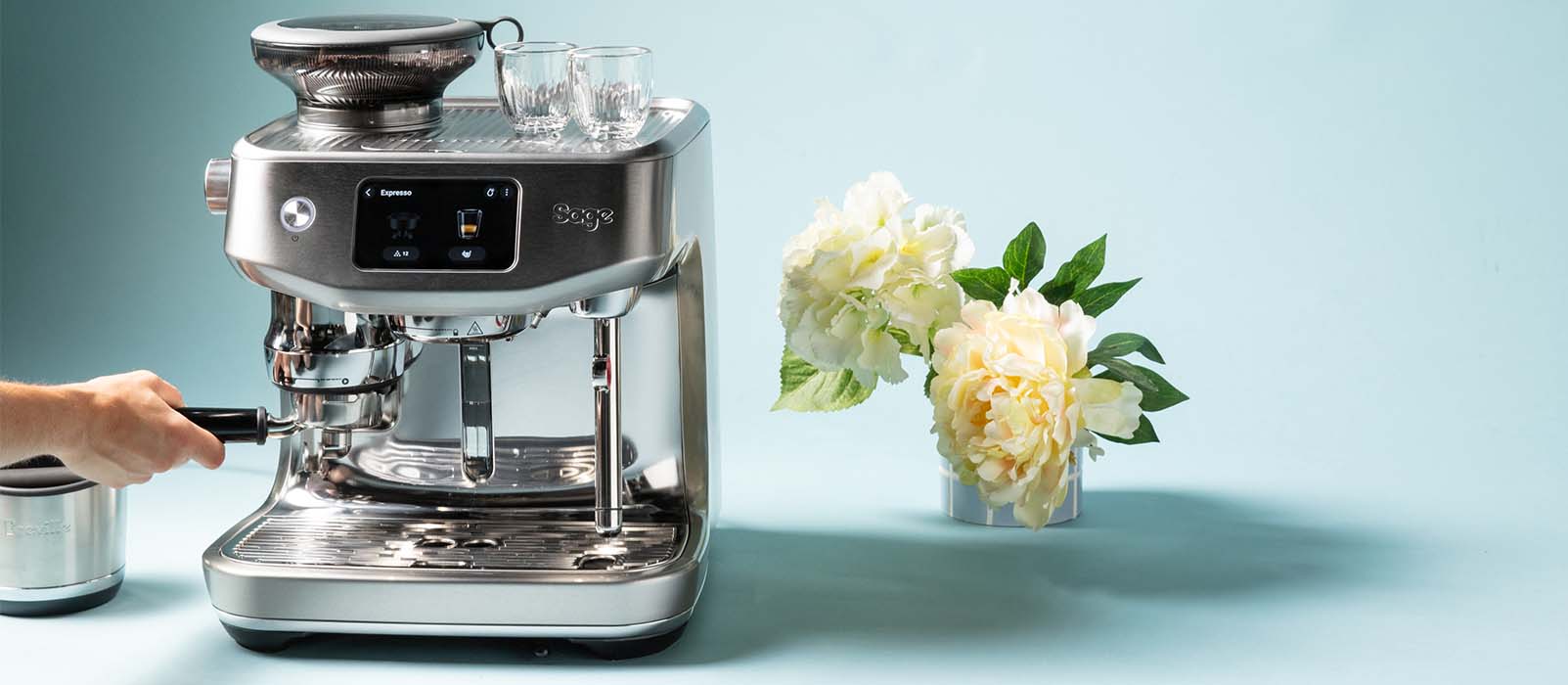
Sage Coffee Machine Cleaning: Descaling & Maintenance Tips for Top-Tier Performance
Written by Alice
Keeping your Sage coffee machine in top condition is essential for enjoying delicious coffee every day and extending the life of your equipment. Whether you own a Sage Barista Express, Oracle Touch, or Bambino model, regular cleaning and descaling will help maintain the flavour and performance of your espresso machine.
In this guide, we’ll walk you through everything you need to know about Sage coffee machine cleaning, from why descaling matters to step-by-step maintenance instructions for your bean-to-cup machine.
Why Should You Descale Your Sage Bean-to-Cup Coffee Machine?
Limescale build-up from water minerals can clog your machine, affect extraction quality, and reduce heating efficiency. Regular descaling & cleaning:
- Ensures consistent temperature and pressure for quality espresso
- Prevents long-term damage to internal components
- Preserves the taste and aroma of your coffee
- Maintains your machine’s warranty and optimal function
Your Sage Barista machine will often notify you when descaling is needed. However, it’s best to set a schedule based on your usage and water hardness.
How to maintain your Sage espresso machine?
The Sage coffee machine cleaning is essential to ensure optimal performance and extend the life of your appliance. Each Sage machine model comes with a specific cleaning guide, and the machine will let you know when it is time to descale or deep clean the extraction unit. Sage coffee machines have a “Clean me” light and button to indicate you should launch a cleaning cycle.
In addition, each machine comes with a complete maintenance kit and a filter cartridge.
For maintenance products specific to your Sage machine, please refer to the appropriate filter cartridges and descaling agents.
How Often to Descale Your Sage Espresso Machine?
If you brew one or two cups a day, descaling every 2–3 months is sufficient. For heavier use—five or more cups daily—aim for every 1–2 months. In areas with hard water, descale more frequently or consider installing a water filter to slow limescale build-up.
Sage Maintenance: How to Descale Your Coffee Machine
Follow these steps for a successful descaling cycle:

Prepare the machine: Empty the drip tray and remove any coffee grounds or pods.

Mix the descaling solution: Fill the water tank with the recommended descaling powder and water (follow Sage’s guidelines or use MaxiCoffee’s compatible products).

Start the descaling cycle: Follow the machine’s display prompts, or press the required button combination if your model uses manual commands.

Rinse: After descaling, rinse the water tank and fill it with clean water. Run a full water cycle to flush any remaining solution.
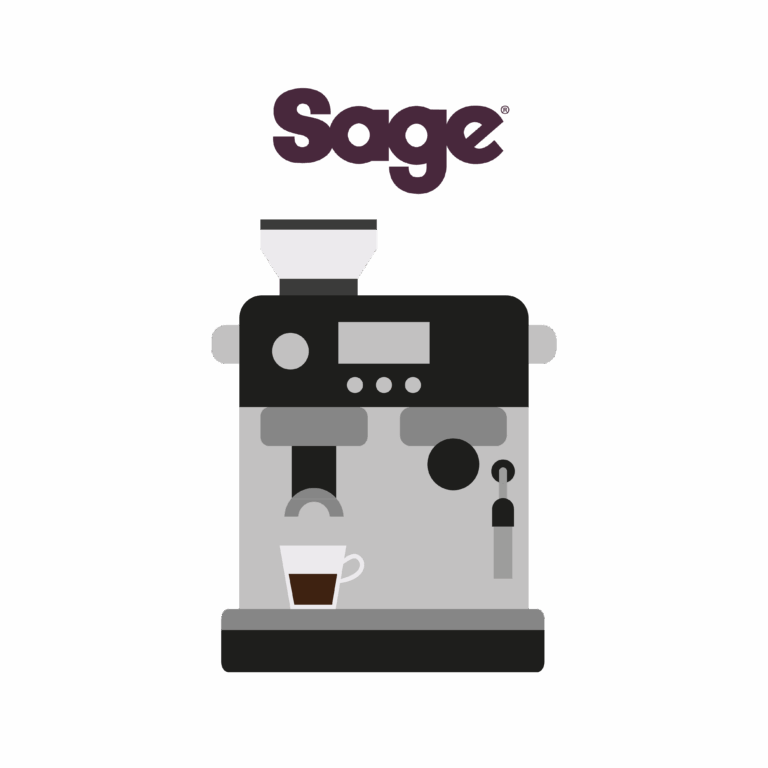
Wipe and dry: Clean the exterior and replace all parts.
Pro tip
Always use Sage-approved or compatible descaling products to avoid damage.
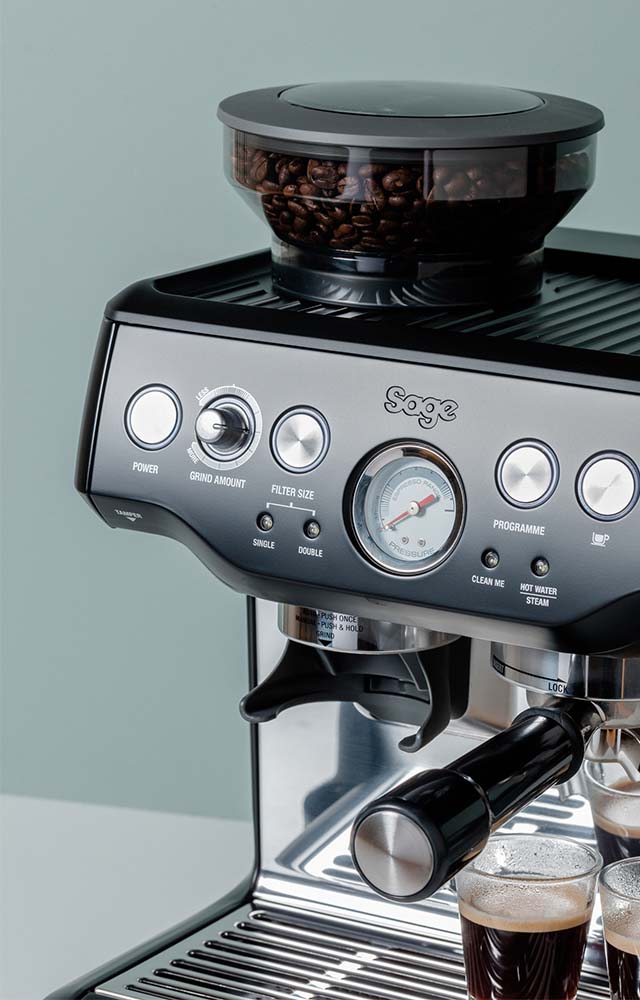
Sage Maintenance: How to Deep Clean Your Built-in Espresso Grinder
A more thorough cleaning cycle is needed periodically to keep your grinder performing at its best. A clean grinder ensures even grinding and optimal espresso extraction. Here’s how we recommend cleaning the grinder components:
Cleaning the Bean Hopper
Start by cleaning the bean hopper, which should be done weekly or at every refill.
- Turn off and unplug the machine.
- Remove the beans using a brush or vacuum.
- Wipe the hopper with a dry or slightly damp cloth.
- Dry completely before refilling with fresh beans.
Cleaning the Burrs (Grinding Blades)
The burrs, or grinding blades, should be cleaned every 4–6 weeks or after grinding about 1 kg of coffee.
- Empty the hopper and run the grinder to eject leftover beans.
- Remove the upper burr (check your manual).
- Brush the burrs using a dry grinder brush.
- Vacuum any loose residue if needed.
- Reassemble carefully and test grind a small amount.
Never Use Water Inside the Grinder
Do not use water when cleaning the grinder’s internal parts. This may lead to buildup and rusting.
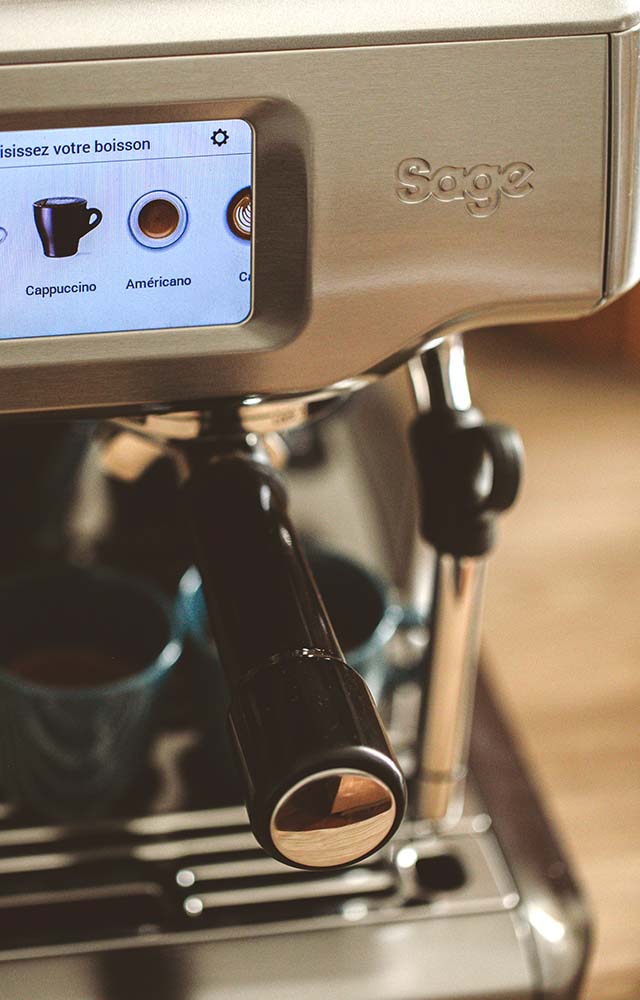
More tips for how to clean sage barista express
Proper care of the steam wand is essential for hygiene and milk quality. Always purge the wand before and after steaming, then wipe the exterior with a damp cloth. If the tip becomes clogged, soak it in warm water. For models with AutoMilQ, the steam wand will purge automatically after each use.
The drip tray should be emptied and rinsed daily or after heavy use. Wash it with warm, soapy water—never put it in the dishwasher. Similarly, the water tank should be cleaned regularly with warm, soapy water and thoroughly rinsed before reuse to prevent any soap residue from affecting the taste of your coffee.
To keep your machine looking as good as it performs, polish the stainless steel exterior using a soft microfibre cloth . Avoid using abrasive cleaning products, which could scratch the surface.
By following this regular Sage coffee machine cleaning cycle, you ensure your equipment remains reliable, hygienic, and capable of producing top-quality coffee. Want to simplify your routine? MaxiCoffee offers a full range of compatible cleaning products for your Sage machine.
